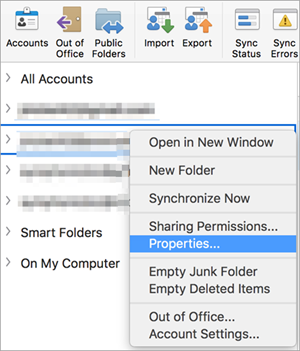

- #Outlook for mac messages not downloading how to
- #Outlook for mac messages not downloading mac os
- #Outlook for mac messages not downloading software
- #Outlook for mac messages not downloading code
#Outlook for mac messages not downloading how to
Here’s how to disable image autoloading in the major desktop and mobile email apps: Gmail on the web You won’t be able to avoid all of the trackers that can hide in your email this way, but you will stop many of them. There is also a simple, basic step you can take to avoid trackers: stop your email from automatically loading images, since images are where the majority of these pixels hide. And extensions such as Ugly Email and PixelBlock have been developed to block trackers on Chrome and Firefox.

For example, since 2014, Google has served all images in Gmail through its own proxy servers, which could hide your location from at least some tracking applications. There have been some attempts to restrict the amount of information that can be transmitted this way.
#Outlook for mac messages not downloading code
When the email is opened, code within the pixel sends the info back to the company’s server. How does it work? A single tracking pixel is embedded in the email, usually (but not always) hidden within an image or a link.
#Outlook for mac messages not downloading software
They’re also tracking whether you’ve opened the email, when you opened it, and where you were at the time by using software like Mailchimp to embed tracking software into the message. Contact your email provider or network administrator to see whether the mail server is available.All of those obnoxious marketing emails that crowd your inbox aren’t just pushing a product. If you successfully connected to the account before, the mail server might be offline. Solution: Make sure the mail server is online.
#Outlook for mac messages not downloading mac os
For instructions about how to enter these settings, see Mac OS Help. Ask your network administrator for the correct settings for your mail proxy server. If you use a network to connect to the Internet, you might have to specify a mail proxy server. Solution: Specify a mail proxy server in your computer's System Preferences. Your account may require that you use special settings such as Secure Sockets Layer (SSL) to connect, or that you override the default port.Ĭause: Your network requires a proxy server to connect with the mail server. Note: If your account still does not work properly, check with your email service provider for details about how to configure your account in a mail application. In the Outgoing server box, enter the server name or address. If you have the address of an alternative SMTP server, enter it in your account settings. Solution: See if your ISP or network administrator can provide an alternative SMTP server to use for your POP or IMAP account. On the pop-up menu, select the authentication type, and then enter your credentials as necessary.Ĭause: Your ISP or network has a firewall that blocks connections to your email service's outgoing mail (SMTP) server. Under Outgoing server, click More Options. In the left pane of the Accounts box, select the account. If you verify that your account settings are correct, but you still can't send messages, try turning on SMTP authentication. Some email services require authentication for their SMTP server. Solution: Turn on SMTP authentication for the POP or IMAP account. Cause: Some POP and IMAP email accounts use an outgoing mail (SMTP) server that requires authentication. Solution: Verify that Outlook is online. On the Outlook menu, make sure that Work Offline is not checked. For information about checking the status of your network connections, see Mac OS Help. On a local network, see if you can access intranet sites. Use a web browser to see if you can access web sites. Solution: Make sure that your computer is connected to the Internet or your network. Cause: Outlook doesn't have a connection to the Internet or your network. Message service can be interrupted for several reasons. Outlook for Microsoft 365 for Mac Outlook 2021 for Mac Outlook 2019 for Mac Outlook 2016 for Mac Office 2016 for Mac Office for business Office 365 Small Business More.


 0 kommentar(er)
0 kommentar(er)
